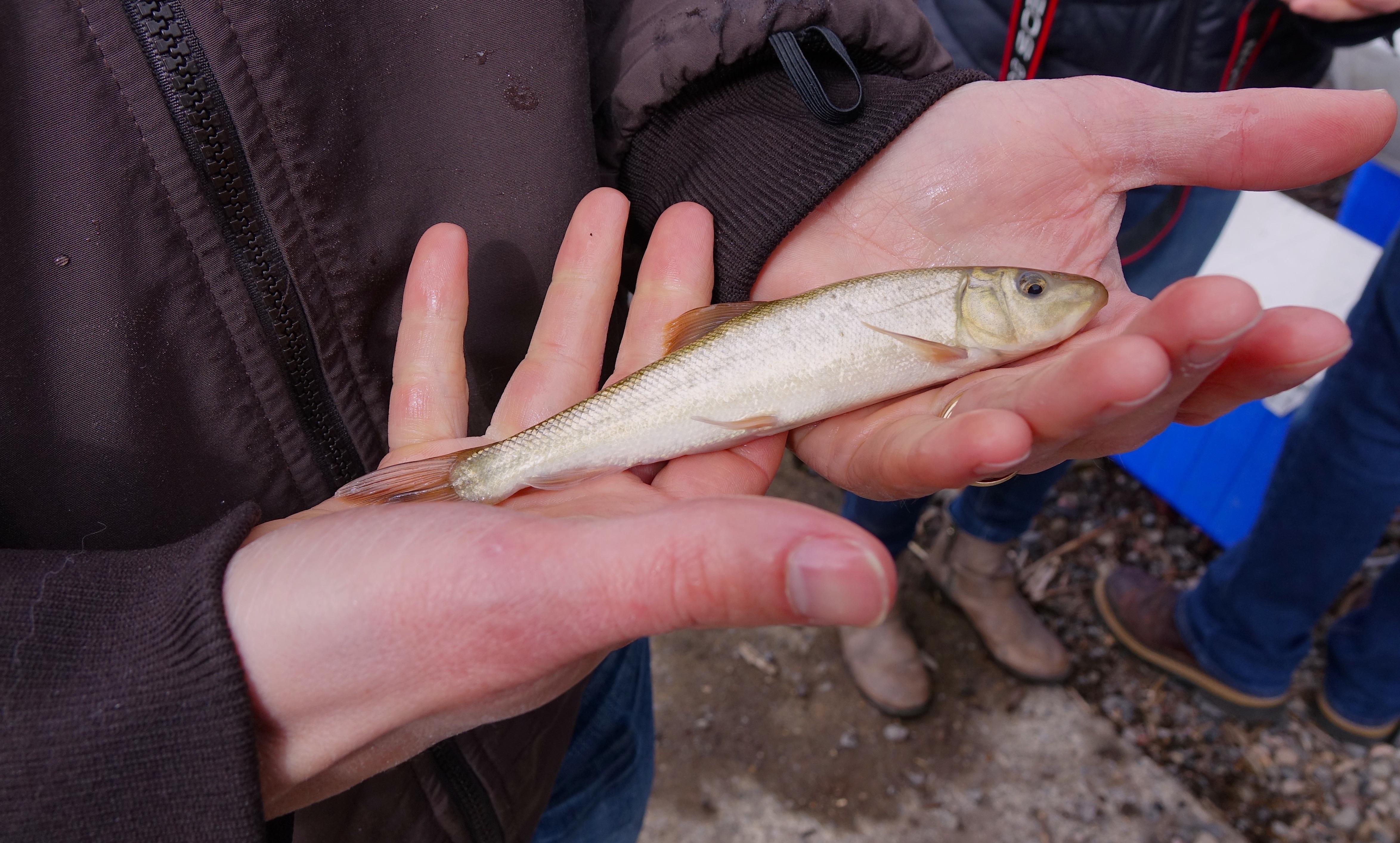
The USFWS raised and released endangered sucker fish to help rebuild populations in the Klamath Basin.
Jes Burns / OPB/EarthFix
Federal officials hit a milestone Tuesday for a new program designed to stabilize and grow the populations of two endangered species of sucker fish in the Klamath Basin.
At a calm cove on Upper Klamath Lake, Alan Mikkelsen, senior advisor to Interior Secretary Ryan Zinke, ceremonially released the first small group of suckers from a new rearing program.
"We got a lake full of food, little guy," he told them.
Mikkelsen upturned a net with three fish and watched the 8-inch juveniles disappear into the murky water.
The suckers have been at the center of tensions between tribes and farmers over scarce water supplies in the region. They only exist in Northern California and Southern Oregon. The fish are culturally important to the Klamath Tribes, once an important source of food.
But numbers plummeted in the latter half of the 2oth century. They've been protected under the Endangered Species Act since 1988.
Despite 30 years with this protected status, the population of both shortnose and Lost River suckers have declined sharply.
The fish are successfully spawning up in the rivers, the eggs hatch, and then the babies enter Upper Klamath Lake.

USFWS biologist Evan Childress releases a sucker into Upper Klamath Lake.
Jes Burns / OPB/EarthFix
"That’s where the trouble starts. They start disappearing over that first year and second year of life. And we get hardly any that survive two years," said U.S. Fish and Wildlife Service biologist Evan Childress. "And the reason for this isn’t totally clear."
Poor water quality in Upper Klamath Lake is considered a major factor. In addition, birds and other fish apparently find suckers to be very tasty.
Related: Birds Take Backseat To Fish, Farms In The Klamath Basin
The Fish and Wildlife Service is hoping that catching newly-hatched suckers and raising them in captivity through their first two years will lead to better survival rates.
The program currently has enough money in its budget to release up to 5,000 suckers annually. But the Fish and Wildlife Service estimates that 60,000 fish will have to be released into the lake every year just to stabilize the population.
The Klamath Tribes have voiced appreciation for the program but said in a statement it will need to be expanded significantly to stabilize the population. They cite an annual release need even higher than the government's estimate: up to 100,000 fish.
Chairman Don Gentry says the Klamath Tribes are also considering their own propagation program. But he says they are approaching this with caution.
"Folks can continue to artificially raise fish, and put them into the system with the idea that they’re harvestable or that you’re protecting them," Gentry said. "But … they’re not self-sustaining, and you’re really not addressing the real problems."
Related: Another Drought Year Promises To Test Klamath Basin
The Klamath Tribes hold senior water rights in the basin, which in the past has given them the legal option of cutting off other water users when conditions for the suckers have deteriorated.
In addition, the federal plan for sucker recovery requires that a certain amount of water be held in Klamath Lake for the fish. This has contributed to Basin farmers not getting as much water as they would like, especially in low water and drought years.
Oregon Gov. Kate Brown recently declared a drought in Klamath County for 2018.
The Interior Department’s Mikkelsen said the new sucker rearing program will benefit the Klamath Tribes, as well as the farmers in the Klamath Basin.
"A management structure that allows for both the captive and wild propagation of these fish and will provide irrigators with certainty to the amount of water they need," he said. "I think that’s connected."
